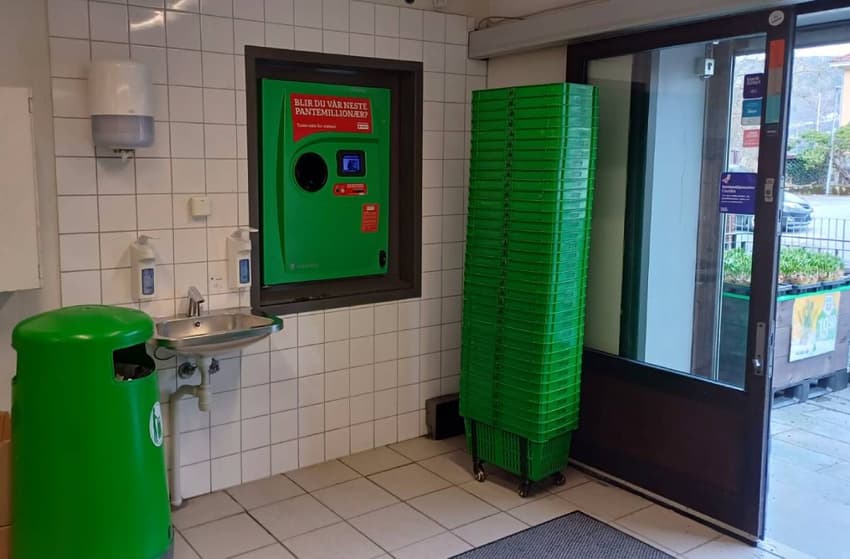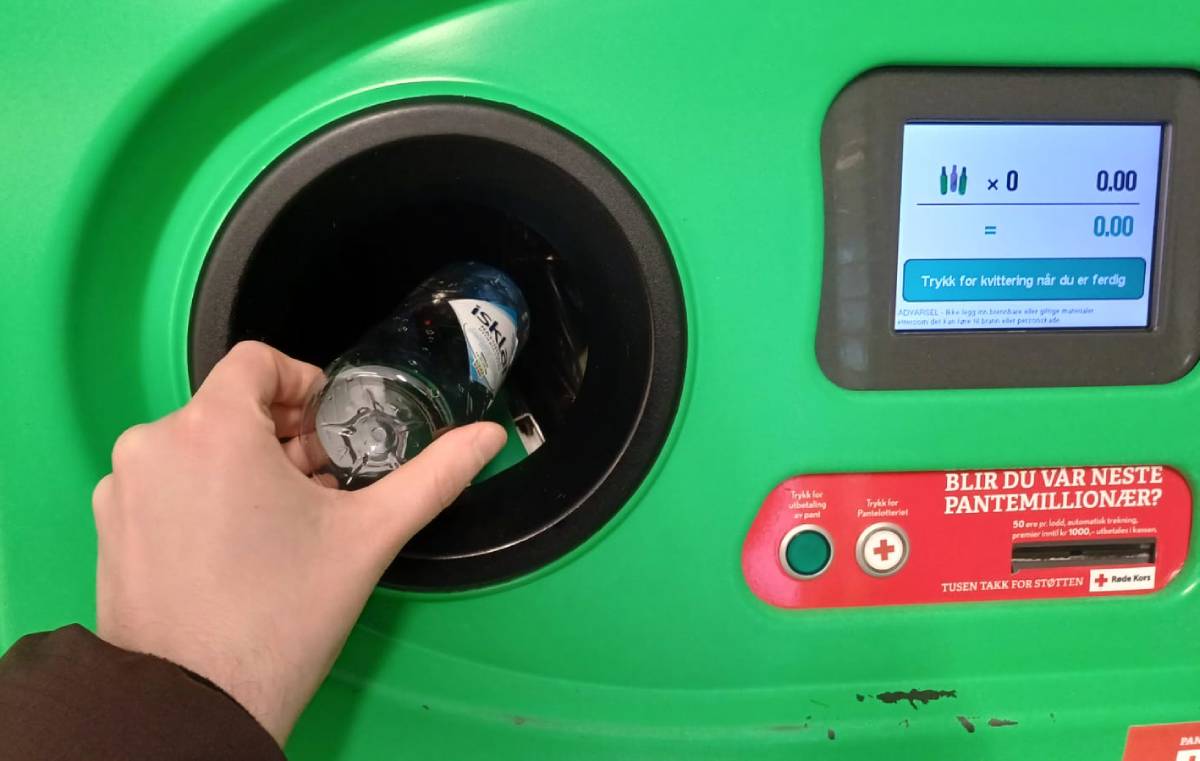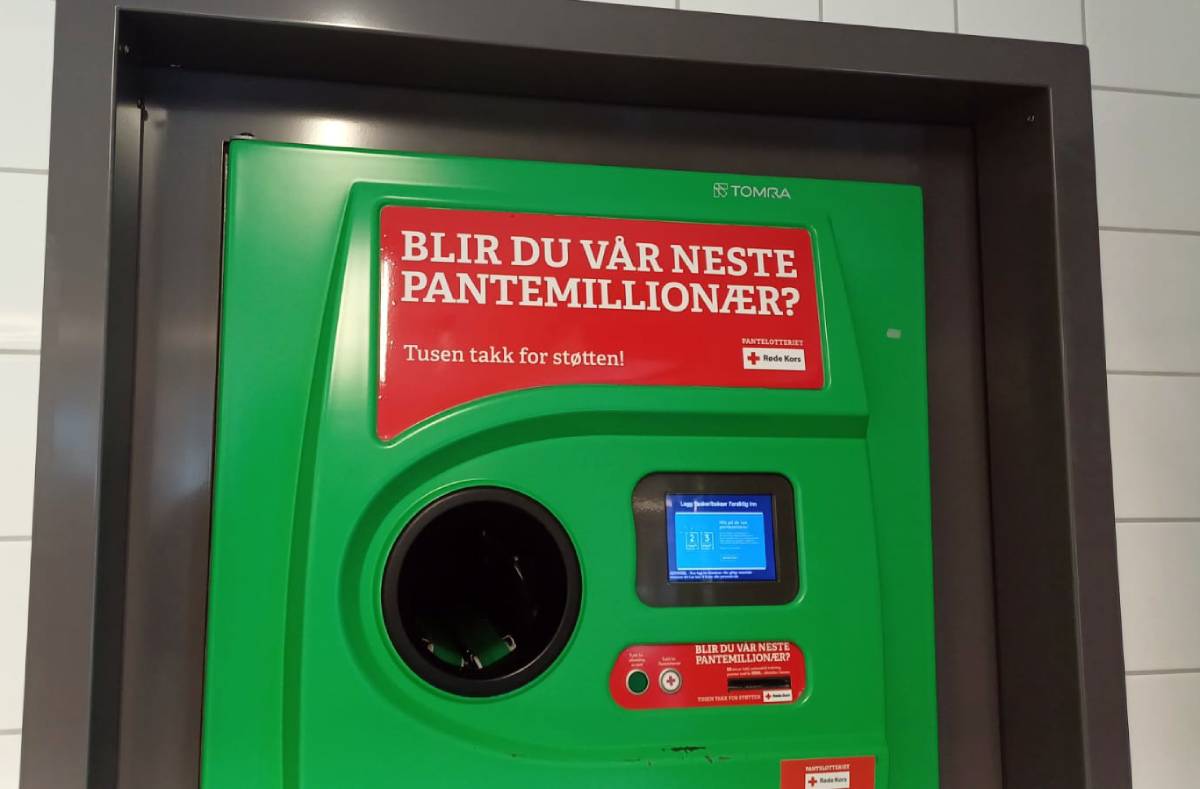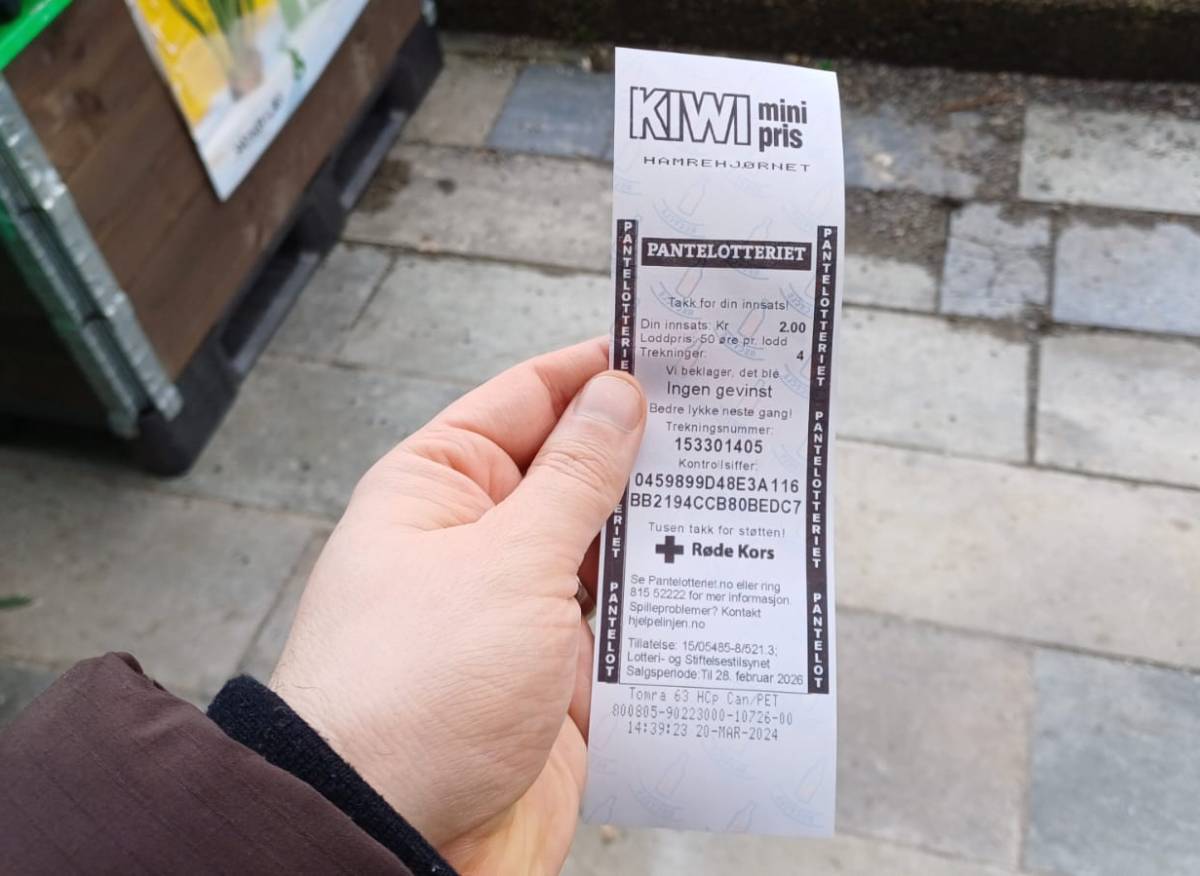Pant: Everything you need to know about Norway's bottle recycling system

The Norwegian bottle deposit system, known as pant, promotes recycling and reducing waste. Here's a closer look at how it works and why it's become an integral part of Norwegian culture.
If you've recently moved to Norway, you've likely already spotted bottle and can collection points in most supermarkets.
These drop-off points are integral to Norway's pant (deposit) system. When consumers buy beverages in plastic bottles and aluminium cans, they pay an additional fee (pant) - typically between one and three kroner - as a deposit.
READ MORE: What you need to know about rubbish and recycling in Norway
This deposit incentivises consumers to return their empty containers for recycling rather than disposing of them as regular waste.
Most people in Norway have a designated bin or bag for storing containers with pant. Once they fill these up, they take them along on their next shopping trip to a grocery store or supermarket.
Bottle recycling in Norway goes back to 1902 when returning bottles to the breweries for the equivalent of 4 kroner. The scheme was later adapted to apply to mineral water. Norway’s wine monopoly would also implement its own scheme, but it ended in 2001.
In May 1999, the pant flaskepant system as we know it today was introduced by Infinitum (formerly Norsk Resirk A/S).

Returning empty bottles and cans to designated store collection points allows for easy reclaiming of your deposit. Pictured is such a machine in a Kiwi store in Bergen, western Norway. Photo by: Robin-Ivan Capar / The Local Norway
How to use the pant machines
By returning empty bottles and cans to designated collection points in stores, where machines scan and sort the containers, you'll be able to reclaim your deposit in the form of a voucher or refund corresponding to the value of the pant.
On average, a regular plastic bag from Kiwi or REMA 1000 can hold bottles and cans worth around 100 kroner in pant, so using the voucher on the spot, to pay for part of your groceries is common.
You'll usually find the pant machine at the entrance to supermarkets, but in some stores (especially the larger ones), it'll be located outside - though not too far from the entrance.

When depositing bottles and cans into the machine, you'll have the option to select between two buttons: one grants you a voucher redeemable at the register, while the other allows you to donate the pant to charity and enter a lottery for a chance to win a prize. Photo by: Robin-Ivan Capar / The Local Norway
Pantelotteriet: The deposit lottery
The pant deposit system also offers a unique opportunity for charitable giving.
In some machines, consumers have the option to donate their refund to charity through a lottery system. By simply pressing a button on the machine, you can contribute the total amount, with the chance of winning a prize if selected.
This Pantelotteriet lottery, launched in April 2008, is operated by Norsk Pantelotteri AS, a company jointly owned by the Norwegian Red Cross and the Olav Thon Group. Proceeds from the lottery support the Red Cross's initiatives.
Participation is available across over 2,000 stores, including major chains like REMA 1000, Kiwi, Meny, and SPAR, as well as select outlets in the Matkroken, Europris, and Coop Norge chains.
Conceived by Olav Thon, the lottery aims to boost the recycling of cans and bottles while providing consistent funding for charitable causes.
Prizes up to 1,000 kroner are typically paid out in cash.

This is what a losing pant lottery ticket looks like. Photo by: Robin-Ivan Capar / The Local Norway
A sustainability effort
Norway's pant system promotes environmental sustainability by giving people a monetary nudge to recycle and reduce the amount of plastic and aluminium waste.
It also has a social element, as it serves as a source of income for those experiencing financial hardship, who can collect and return bottles and cans (it's not uncommon to see people collecting these containers from public spaces, such as parks or streets, to return them for pant).
Furthermore, the system also fosters a broader culture of environmental consciousness among Norwegians, even if the country is western Europe's largest producer of oil and gas.
Comments
See Also
If you've recently moved to Norway, you've likely already spotted bottle and can collection points in most supermarkets.
These drop-off points are integral to Norway's pant (deposit) system. When consumers buy beverages in plastic bottles and aluminium cans, they pay an additional fee (pant) - typically between one and three kroner - as a deposit.
READ MORE: What you need to know about rubbish and recycling in Norway
This deposit incentivises consumers to return their empty containers for recycling rather than disposing of them as regular waste.
Most people in Norway have a designated bin or bag for storing containers with pant. Once they fill these up, they take them along on their next shopping trip to a grocery store or supermarket.
Bottle recycling in Norway goes back to 1902 when returning bottles to the breweries for the equivalent of 4 kroner. The scheme was later adapted to apply to mineral water. Norway’s wine monopoly would also implement its own scheme, but it ended in 2001.
In May 1999, the pant flaskepant system as we know it today was introduced by Infinitum (formerly Norsk Resirk A/S).

How to use the pant machines
By returning empty bottles and cans to designated collection points in stores, where machines scan and sort the containers, you'll be able to reclaim your deposit in the form of a voucher or refund corresponding to the value of the pant.
On average, a regular plastic bag from Kiwi or REMA 1000 can hold bottles and cans worth around 100 kroner in pant, so using the voucher on the spot, to pay for part of your groceries is common.
You'll usually find the pant machine at the entrance to supermarkets, but in some stores (especially the larger ones), it'll be located outside - though not too far from the entrance.

Pantelotteriet: The deposit lottery
The pant deposit system also offers a unique opportunity for charitable giving.
In some machines, consumers have the option to donate their refund to charity through a lottery system. By simply pressing a button on the machine, you can contribute the total amount, with the chance of winning a prize if selected.
This Pantelotteriet lottery, launched in April 2008, is operated by Norsk Pantelotteri AS, a company jointly owned by the Norwegian Red Cross and the Olav Thon Group. Proceeds from the lottery support the Red Cross's initiatives.
Participation is available across over 2,000 stores, including major chains like REMA 1000, Kiwi, Meny, and SPAR, as well as select outlets in the Matkroken, Europris, and Coop Norge chains.
Conceived by Olav Thon, the lottery aims to boost the recycling of cans and bottles while providing consistent funding for charitable causes.
Prizes up to 1,000 kroner are typically paid out in cash.

A sustainability effort
Norway's pant system promotes environmental sustainability by giving people a monetary nudge to recycle and reduce the amount of plastic and aluminium waste.
It also has a social element, as it serves as a source of income for those experiencing financial hardship, who can collect and return bottles and cans (it's not uncommon to see people collecting these containers from public spaces, such as parks or streets, to return them for pant).
Furthermore, the system also fosters a broader culture of environmental consciousness among Norwegians, even if the country is western Europe's largest producer of oil and gas.
Join the conversation in our comments section below. Share your own views and experience and if you have a question or suggestion for our journalists then email us at [email protected].
Please keep comments civil, constructive and on topic – and make sure to read our terms of use before getting involved.
Please log in here to leave a comment.